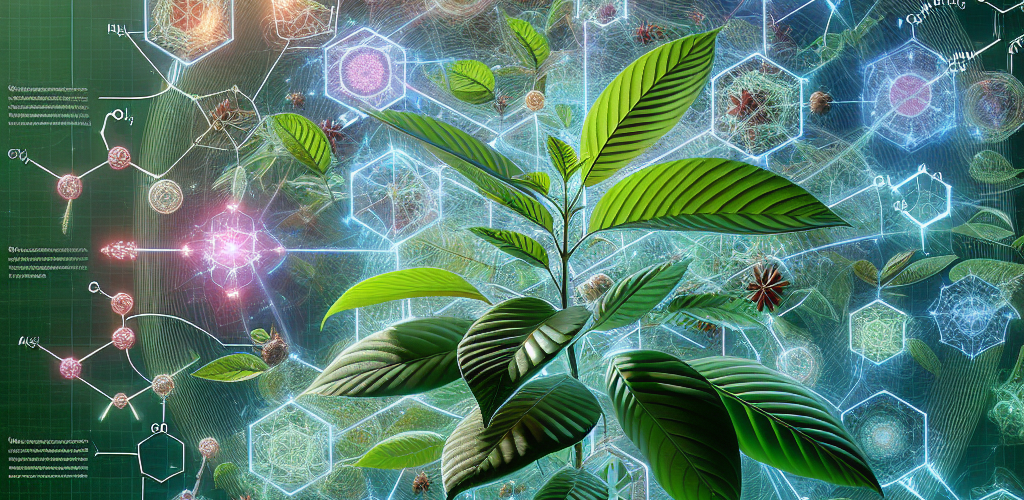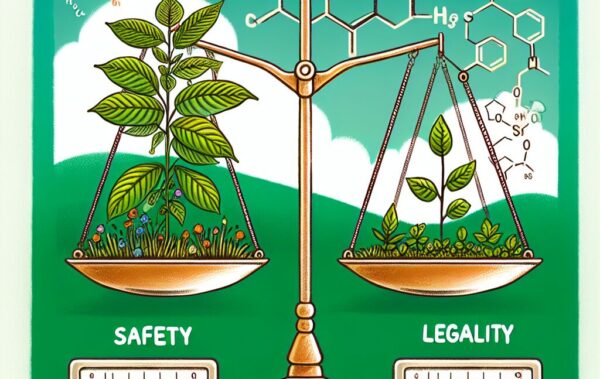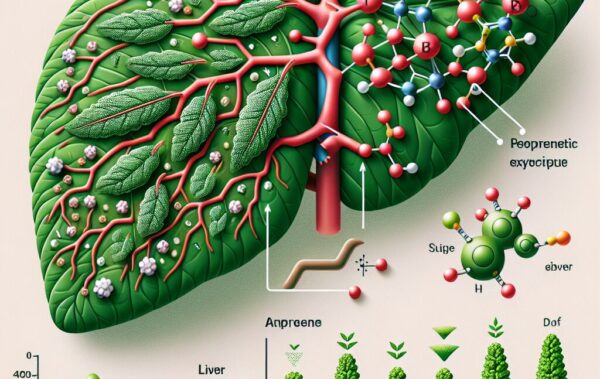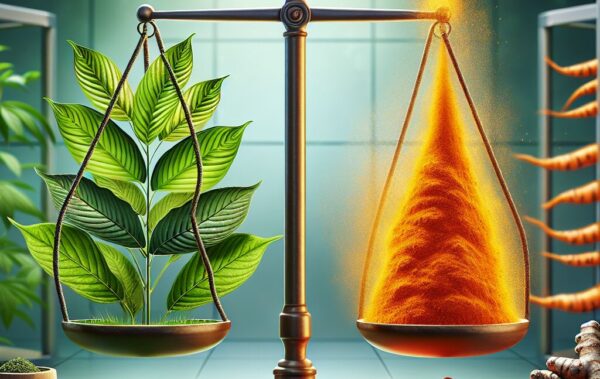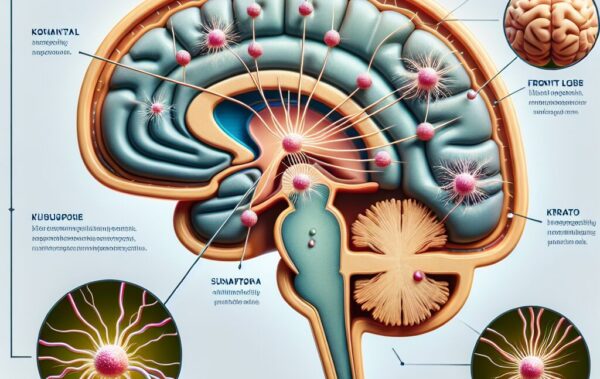- Chemical composition of kratom
- Mitragynine and 7-Hydroxymitragynine: Primary alkaloids
- Synergistic effects of kratom’s alkaloid profile
- Pharmacodynamics: Kratom’s action in the human body
- Therapeutic potential and safety concerns
Kratom, a tropical evergreen tree from the coffee family native to Southeast Asia, is not just a single substance but a complex amalgam of various components, each contributing to the overall effect experienced by the user. Understanding the chemical composition of kratom is an integral part of decoding its pharmacology and paving the way for potential therapeutic uses and safety assessments.
This herbal powerhouse contains a multitude of alkaloids, which are nitrogen-containing compounds known to have pronounced physiological actions on humans and animals. At the heart of kratom’s intricate profile are two primary alkaloids: mitragynine and 7-hydroxymitragynine. These two components, among others, are believed to be responsible for most of the effects attributed to kratom use, ranging from analgesia to the alleviation of opioid withdrawal symptoms.
However, the chemical composition of kratom extends well beyond these two alkaloids. Other notable components include paynantheine, speciogynine, and speciociliatine. Together, these alkaloids work in concert, producing a synergistic effect that could potentially enhance or modify the impact of mitragynine and 7-hydroxymitragynine.
While mitragynine predominantly accounts for approximately two-thirds of the total alkaloid content in kratom, the percentages can vary depending on multiple factors, such as the geographical origin of the plant and the age of the leaves. For instance, younger leaves typically have a higher concentration of mitragynine, while older leaves are more likely to contain increased levels of 7-hydroxymitragynine and other alkaloids.
Given this variability, vendors and consumers alike must understand the diverse nature of kratom’s components. As such, products like kratom powder or capsules may have differing effects based on their composition, potentially catering to a range of needs and preferences.
Section 2:
When considering the key points about kratom’s chemical composition, we must factor in:
- The presence of over 40 different alkaloids in kratom, each contributing to its complex pharmacological profile.
- Variations in alkaloid compositions that result in different kratom strains, which can range from Maeng Da to Bali, each with their unique characteristics.
- Environmental and genetic factors that influence the alkaloid content in kratom leaves, including the climate, soil composition, and the age of the kratom tree.
The complex interplay of these components makes the task of decoding kratom’s pharmacology both challenging and fascinating. It’s not simply about the presence of mitragynine and 7-hydroxymitragynine but about how these components join forces with the rest of the alkaloids in the mix. This synergy may well be the key to unlocking the full therapeutic potential of kratom while ensuring its safe use.
Section 3:
Moving deeper into the key point focuses, it’s essential to consider the following table showcasing some crucial alkaloids found in kratom aside from mitragynine and 7-hydroxymitragynine:
| Alkaloid | Possible Effects |
|---|---|
| Paynantheine | Considered to have muscle relaxant properties |
| Speciogynine | May contribute to muscle relaxation |
| Speciociliatine | Possibly a weak opioid agonist |
Understanding these additional components provides a more comprehensive picture of how kratom may act within the body. Yet, the pharmacodynamics—how the drug exerts its effects within the body—remain an area ripe for further exploration.
Section 4:
By recognizing the wealth of components present within kratom and their possible interactions, we begin to piece together the puzzle of its pharmacological effects. While mitragynine and 7-hydroxymitragynine may stand in the spotlight, there’s an ensemble of supporting alkaloids that influence their performance. This complex chemical choreography illustrates the necessity of comprehensive research and the potential dangers of oversimplifying the pharmacology of such a sophisticated botanical.
As kratom continues to gain popularity, the need for a deeper understanding of its components and their effects becomes increasingly critical. With well-informed usage and continued research, kratom could hold the key to new therapeutic avenues or present an alternative for individuals seeking relief from various ailments.
Section 5:
Frequently Asked Questions (FAQ):
1. What are the primary alkaloids found in kratom?
2. How does the alkaloid content vary between different strains of kratom?
3. Can environmental factors affect the chemical composition of kratom?
4. Why is it important to understand the synergy between kratom’s alkaloids?
In the quest to fully decode the complex pharmacology of kratom, every new piece of data, each carefully conducted study, and the lived experiences of those who use it for its therapeutic potential helps to inform our collective understanding of this multifaceted plant.
Mitragynine and 7-Hydroxymitragynine: Primary alkaloids
Among the over 40 alkaloids identified in kratom, mitragynine and 7-hydroxymitragynine are the most prominent, some might say they’re the superstars of this botanical world. Mitragynine, in particular, is the most abundant, typically constituting up to 66% of the total alkaloid mass in kratom leaves. It is an indole-based alkaloid that researchers believe acts mainly as a partial agonist at the mu-opioid receptor, but it also has affinity for other receptor systems which could contribute to its complex effects.
7-Hydroxymitragynine, although present in much smaller amounts (usually less than 2% of the total alkaloid content), is also a vital component due to its potency. It’s believed to be more potent by weight than mitragynine, and it’s considered to be a full agonist at the mu-opioid receptor, which explains its significant contribution to the analgesic effects many users report.
But the story doesn’t end with these two alkaloids; the particular pharmacology of kratom is further complicated by the facts surrounding their bioavailability and metabolism. Metabolites of mitragynine, such as the phase I metabolite 7-hydroxymitragynine, can be produced in the liver, which studies suggest might contribute to the analgesic effects without directly ingesting 7-hydroxymitragynine itself.
The scientific community is still engaged in decoding the pharmacology of these substances. What is known points towards a nuanced multi-receptor pharmacodynamic interaction, which means kratom doesn’t just interact with opioid receptors but also touches on serotonergic, adrenergic, and dopaminergic systems. This multidimensional action is potentially what gives kratom its unique profile, such as offering mild stimulation at low doses and more pronounced sedative effects at higher dosages.
Users looking for specific effects often choose products with known concentrations of these key alkaloids. For example, those desiring the pain-relieving properties might opt for higher 7-hydroxymitragynine content products, such as kratom extracts. On the other hand, consumers seeking a more balanced effect may prefer the overall profile provided by full-spectrum kratom powder.
For those fascinated by the more technical aspects, understanding the pharmacokinetics—which is how the body processes these compounds—is just as crucial. Mitragynine, for example, is known to have a longer half-life than 7-hydroxymitragynine, meaning its effects can be sustained over a longer period. Companies that develop kratom products, such as those listed on our marketplace, continue to innovate to optimize the pharmacological profiles of their offerings, allowing users to tailor their kratom experience to their personal preferences and needs.
Given the ongoing research and the shifting landscape of kratom’s legality and acceptance, those on the cutting edge of kratom’s usage, pharmacology, and product development remain observant of how these primary alkaloids and their complex interplay with secondary components define the user’s experience. While the scientific community continues to unearth the intricacies of kratom’s components, the role of mindful consumption and regulation becomes ever more relevant in ensuring a safe and beneficial user experience.
Synergistic effects of kratom’s alkaloid profile
Emerging research suggests that the pharmacology of kratom is not defined by mitragynine and 7-hydroxymitragynine alone, but rather by the synergistic effects of its entire alkaloid profile. This symphony of components working in harmony significantly enhances kratom’s physiological impact compared to the effects of its individual alkaloids in isolation.
The concept of synergy in pharmacology is well-documented, and it can lead to effects that are more potent or qualitatively different than what would be achieved by the compounds independently. In kratom, this means that the interaction of lesser-known alkaloids with the primary ones could influence efficacy or reduce potential side effects, making the decoding of these synergistic relationships a pivotal aspect of understanding kratom’s full potential.
For users and practitioners alike, becoming acquainted with the pharmacokinetics and synergy among kratom’s alkaloids is paramount. Kratom enthusiasts who frequent our platform often report preferences for specific effects, ranging from stimulation to relaxation, which could be attributed to this synergy. It is why we see a demand for diverse product offerings, such as those found in the kratom extracts category, which may offer a concentrated experience of this synergy, or the more balanced profiles of kratom powders.
Decoding kratom’s pharmacology thus involves examining how these alkaloids influence each other’s pharmacokinetics—absorption, distribution, metabolism, and excretion. Some compounds may, for example, inhibit the metabolism of mitragynine, leading to prolonged effects, while others might facilitate its absorption, leading to quicker onset of effects.
It is not uncommon within the community of kratom users to hear anecdotal evidence relating to the synergy in kratom’s alkaloid profile. However, it is critical to approach such testimonials with caution and a scientific lens. Broadly speaking, we understand that this botanical’s effects are multifaceted, and we see the potential for such effects to be harnessed in a therapeutic context. With more comprehensive studies, kratom’s complexity can be navigated to possibly create tailored formulations that may serve as a future asset in the realm of natural health and wellness products.
It is clear that as we progress in our journey of decoding the complex pharmacology of kratom’s components, we are drawing nearer to a better understanding of how to effectively and safely incorporate this plant into modern pharmacopeia. This knowledge will empower both consumers and industry leaders to make more informed decisions about product development, usage, and advocacy for this enigmatic botanical.
Pharmacodynamics: Kratom’s action in the human body
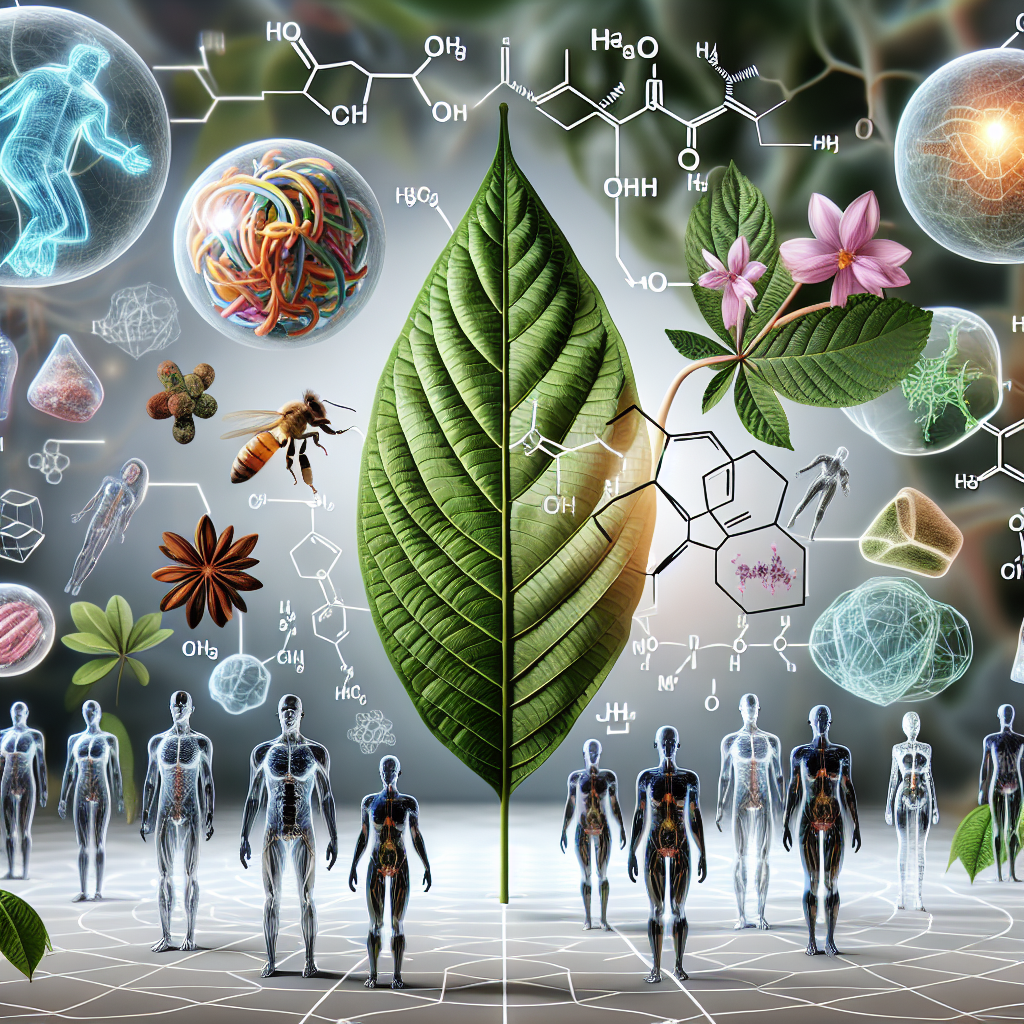 When exploring the pharmacodynamics of kratom within the human body, we delve into how this plant’s broad range of alkaloids interact with the body’s systems, particularly the central nervous system. This aspect of pharmacology examines the mechanisms by which kratom’s components exert their effects—whether they manifest as analgesia, euphoria, stimulation, or sedation.
When exploring the pharmacodynamics of kratom within the human body, we delve into how this plant’s broad range of alkaloids interact with the body’s systems, particularly the central nervous system. This aspect of pharmacology examines the mechanisms by which kratom’s components exert their effects—whether they manifest as analgesia, euphoria, stimulation, or sedation.
Kratom’s main active components, mitragynine, and 7-hydroxymitragynine have received the most scientific attention. These alkaloids primarily interact with opioid receptors, which play a crucial role in the body’s perception of pain. It’s a fascinating process; once ingested, these alkaloids bind with mu-opioid receptors in the brain, similar to the way opioids like morphine and codeine do, but with notable differences in their exact functions and side effect profiles.
Mitragynine, for instance, is a partial agonist at these receptor sites—it activates the receptor, but to a lesser extent than a full agonist. This is medically significant because partial agonists can help to alleviate pain without leading to the same level of respiratory depression that is a notorious risk associated with conventional opioids.
7-Hydroxymitragynine, on the other hand, is a more potent full agonist at the mu-opioid receptors but is present in kratom leaves at much lower concentrations. When consumed, the body metabolizes mitragynine into various derivatives, including 7-hydroxymitragynine, potentially increasing its painkilling properties.
However, the story of kratom’s pharmacodynamics does not end with the opioid system. To simply label kratom as an opioid would be an oversimplification of its complex interaction with the human body. Research indicates mitragynine also interacts with other receptor systems, including serotonergic (5-HT2A), adrenergic (alpha-2), and dopaminergic receptors, which can contribute to its mood-enhancing and stimulant effects. These interactions underscore kratom’s unique multi-target approach, which results in a pharmacological profile distinct from traditional opioids.
Products like kratom liquid extracts may concentrate these effects due to their higher alkaloid content, while the broad spectrum of Bali kratom powder might offer a more nuanced experience, echoing the natural complexity of the kratom leaf.
Decoding the interaction of kratom’s many components within the human body also involves understanding the concept of entourage effect—whereby all the alkaloids present in kratom interact with one another to produce an overall effect that is thought to be more balanced and perhaps ‘smoother’ than the effects of isolated compounds.
In the realm of science, however, correlation does not imply causation, and so while anecdotal evidence can provide valuable insights, it requires the backing of clinical research to establish the pharmacological basis of these claims firmly. As the number of kratom users continues to grow, the demand for such studies becomes more urgent, emphasizing the need for a detailed, scientific understanding of how each alkaloid component contributes to the overall pharmacodynamics of kratom.
It is this meticulous decoding of kratom’s pharmacology that will pave the way for potentially new therapeutic applications, ensuring that consumers and healthcare providers alike can understand and harness the benefits of kratom while mitigating risks.
In conclusion, kratom’s action in the human body is a rich tapestry of interactions, a network of engagement with various receptors leading to its myriad effects. As research continues, we gain a clearer image of this botanical’s pharmacodynamics, providing invaluable knowledge for developers, vendors, and users in the space of natural health solutions.
Therapeutic potential and safety concerns
Kratom’s therapeutic potential has been a topic of considerable interest and debate, as people search for natural alternatives to conventional medications. It has been traditionally used in Southeast Asia for its stimulant and sedative properties, pain relief, and as a substitute for opium. Users report various health benefits, from increased energy and focus to relief from chronic pain and opioid withdrawal symptoms. On the flip side, safety concerns cannot be overlooked. The lack of regulation in numerous jurisdictions and the variability in kratom’s composition lead to challenges in ensuring consumer safety.
The two most studied components, mitragynine and 7-hydroxymitragynine, have been the focal points of research on kratom’s pharmacology. These compounds have shown potential for treating chronic pain, which is significant given the opioid epidemic and the need for non-addictive painkillers. Despite the promising therapeutic potential, the safety profile of kratom is not entirely understood, and this is an area warranting cautious progression.
The safety concerns surrounding kratom largely stem from its pharmacologically active components. There have been reported cases of toxicity and even fatalities, although often involving the co-consumption of other substances. Mitragynine has a complex pharmacokinetic profile, with various factors influencing its absorption, distribution, metabolism, and elimination.
Regulatory bodies like the FDA have expressed concerns regarding kratom, often citing the lack of clinical trials and the potential for abuse. The DEA has also attempted to classify kratom as a Schedule I substance, arguing that it poses a risk to public health and has no accepted medical use. However, these positions are often met with opposition from kratom advocacy groups and consumers who stress the herbal supplement’s potential for alleviating a variety of conditions, such as chronic pain, anxiety, and depression.
When discussing kratom in a therapeutic context, one cannot ignore the emerging anecdotal reports and preliminary studies suggesting its potential in easing opioid withdrawal. The components within kratom may offer a multi-target approach, potentially impacting not just opioid receptors but also other neurotransmitter systems, which could explain its ability to help with withdrawal symptoms.
Still, caution must be exercised, as kratom is not an FDA-approved medication, and using it in place of prescribed treatments without medical supervision can lead to unintended consequences. To safely harness kratom’s potential benefits, a clear understanding of appropriate dosing, interactions with other medications, and individual health conditions is crucial. Mitragynine, for instance, while having potential as an analgesic, can become dangerous if consumed in high concentrations or if extracted into potent forms like those found in kratom extract capsules.
There is a growing market for kratom-based products, ranging from traditional powders to more contemporary forms like kratom gummies. Each product presents its unique profile of alkaloid concentrations, which may impact the user’s experience and safety. As kratom moves closer to mainstream recognition, vendors and consumers alike could benefit from standardized production practices and quality assurance measures.
Above all, more clinical research is needed to decode the pharmacology of kratom’s components thoroughly and to define its therapeutic potential and safety. The knowledge so garnered could lead to the development of standardized, safe kratom-based products that could offer alternative treatment options for patients. Proper regulation and research could also provide safeguarding measures to prevent potential abuse and ensure consumers are well-informed about the substances they are using.
As the debate over kratom’s legal status evolves alongside our understanding of its pharmacology, it remains clear that this botanical’s components hold potential that deserves exploration under well-regulated and scientifically rigorous conditions. It is through decoding the complex pharmacology of kratom’s components that we may unlock its therapeutic potential while mitigating safety concerns, creating a path forward for this traditional botanical in modern health management.

